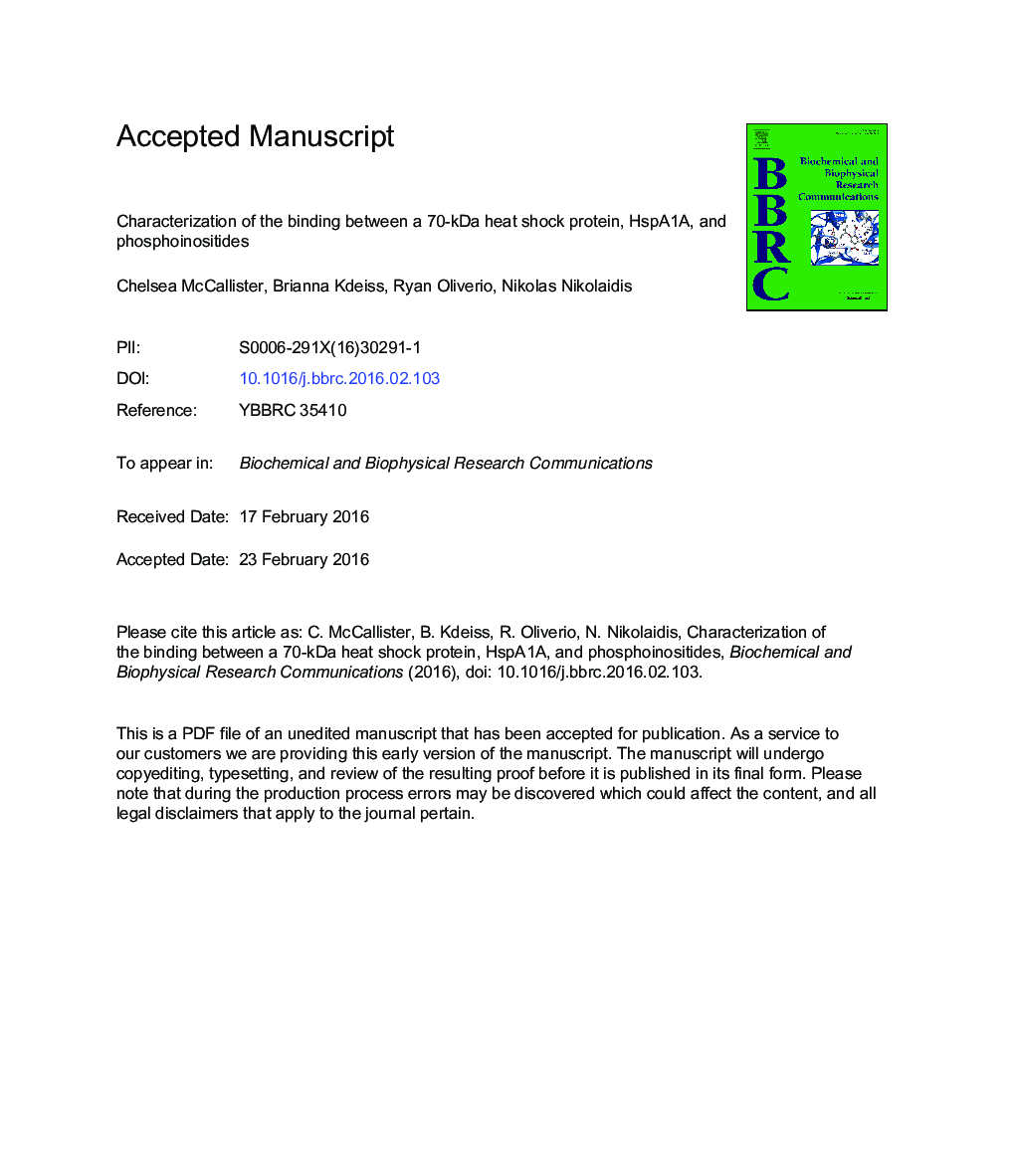| Article ID | Journal | Published Year | Pages | File Type |
|---|---|---|---|---|
| 10748650 | Biochemical and Biophysical Research Communications | 2016 | 26 Pages |
Abstract
HspA1A, a seventy-kilodalton heat shock protein, binds to specific anionic lipids and this interaction regulates important physiological phenomena like apoptosis, tumor growth, and lysosomal rescue. However, whether HspA1A binds to phosphoinositides has yet to be established and quantified. Therefore, in this study, we determined the binding affinity of HspA1A to several phosphoinositides and characterized five aspects of their molecular interaction. First, we established that HspA1A binds phosphatidylinositol monophosphates with higher affinity than di- and triphosphorylated inositides. Second, using high concentrations of potassium we found that HSPA1A embeds within the lipid bilayer of all phosphoinositides tested. However, the effects of the high salt concentrations were significantly different between the different phosphoinositides. Third, using calcium and reaction buffers equilibrated at different pH values we found that these differentially affected HspA1A-phosphoinositide binding, revealing a lipid-specific pattern of binding. Fourth, by assessing the binding properties of the two HspA1A domains, the nucleotide-binding domain and the substrate-binding domain, we determined that in most cases the full-length protein is necessary for binding to phosphoinositides. Fifth, by including in the reactions nucleotides and protein substrates we determined that they minimally and differentially affected phosphoinositide-binding. Collectively, these findings strongly suggest that the HspA1A-phosphoinositide binding is complex yet specific, is mediated by both electrostatic and hydrophobic interactions, is not related to the lipid-head charge, and depends on the physicochemical properties of the lipid.
Keywords
PI(3,5)P2NBDLVSSGChsp70PI(3,4)P2SBDPhosphatidylinositol 4-phosphatePI(3)PPI(3,4,5)P3PI(4)PPI(4,5)P2StressSDS-PAGESodium dodecyl sulfate polyacrylamide gel electrophoresissubstrate-binding domainnucleotide-binding domainSulfatideMembranesphosphatidylinositolphosphatidylcholinePhosphatidylserinephosphatidylinositol (3,4,5)-triphosphatephosphatidylinositol 3,4-bisphosphatephosphatidylinositol 3-phosphatePhosphatidylinositol 3,5-bisphosphatephosphatidylinositol 4,5-bisphosphatePhosphatidylinositol 5-phosphateLiposomesBMPHeat-shock proteinsLipid-bindingCardiolipin
Related Topics
Life Sciences
Biochemistry, Genetics and Molecular Biology
Biochemistry
Authors
Chelsea McCallister, Brianna Kdeiss, Ryan Oliverio, Nikolas Nikolaidis,
